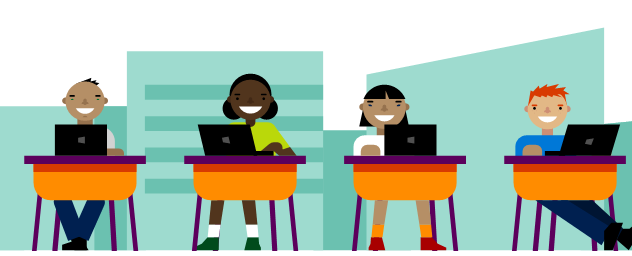Women are important contributors to our tech ecosystem. Our 2018 State of the App Economy report found that the $950 billion app economy employs more than 4.7 million American developers, software engineers, information security analysts, and teachers across the nation. This dynamic economy will add more than 440,000 new computing jobs to the American workforce by 2024 and offers incredible opportunities to Americans across the nation. However, we to do more to ensure our nation’s women and girls have a pathway to access this ecosystem and benefit from these new opportunities.
At ACT | The App Association, we are committed to bridging the gender gap that exists in our nation’s tech ecosystem to provide more women and girls access to computing resources, tech training, and the benefits of the app economy. But to find a path forward, we must first understand the depth of the problem.
- Many girls do not have access to computer science education. Across the country, only 40 percent of K-12 classrooms teach computer literacy, and just a quarter of schools offer a dedicated computer science class. In high school, just 40 percent of schools offer advanced placement (AP) computer science courses. Though the number of young women who take these classes has grown over the years, they still represented just 26 percent of AP computer science exam takers last year.
- Fewer young women receive computer science degrees. Last year, just 59,000 American undergraduate students earned computer science degrees – a fraction of what we need to fill our nation’s 503,000 available computing jobs. Less than 20 percent (18.03 percent) of those graduates were women. Surprisingly, we have seen a decrease in women studying computer science in college – in 1985, the percentage computer science degrees awarded to women was still small, but it topped 37 percent.
- There is a strong gender imbalance in computing jobs. While they hold roughly half (47 percent) of all jobs across the country, women are employed in less than a quarter of our nation’s computing jobs. This includes application and software developers, computer programmers, software engineers, technical support, and computer science teachers. Considering the economic benefits of computing jobs, which pay salaries more than double the national average, many women simply don’t enjoy the benefits of this ecosystem.
- Women earn a fraction of male colleagues’ salaries in comparable computing jobs. A 2017 report by the Institute for Women’s Policy Research detailed the gender wage gap in a variety of occupations. Computing jobs offer some of the nation’s most competitive wages, with average salaries exceeding $86,000 per year. However, the report found that female software developers earn just 83 percent of their male colleagues who hold the same job.
- Women are beginning to earn more leadership roles in technology. Nearly all the women featured on Fortune’s Most Powerful List majored in STEM fields. While just 24 of the Fortune 500 companies have female CEOs, 17 percent of these companies’ chief information officer (CIO) positions were held by women. Today, we see more women holding leadership roles in our nation’s most innovative tech companies, but we have more work to do.
Women have an important role in the tech ecosystem. Our nation’s leadership in tech depends on the ideas, innovations, and contributions of the brilliant men AND women across our country. ACT | The App Association is proud to work with organizations like the International Telecommunications Union (ITU), Computer Science Education Coalition (CSEC), and others to raise awareness of the gender gap in our nation’s computing workforce and encourage more girls and young women to engage in tech-related education and careers. We urge Congress to allocate $250 million for K-12 computer science education to provide our students the resources they need to learn computing skills and foster girls’ and young women’s interest in tech and computing jobs.
We will continue highlighting the contributions of women developers, innovators, and creators throughout the tech ecosystem and support an environment where all women can engage and succeed in tech.
Image: Microsoft
